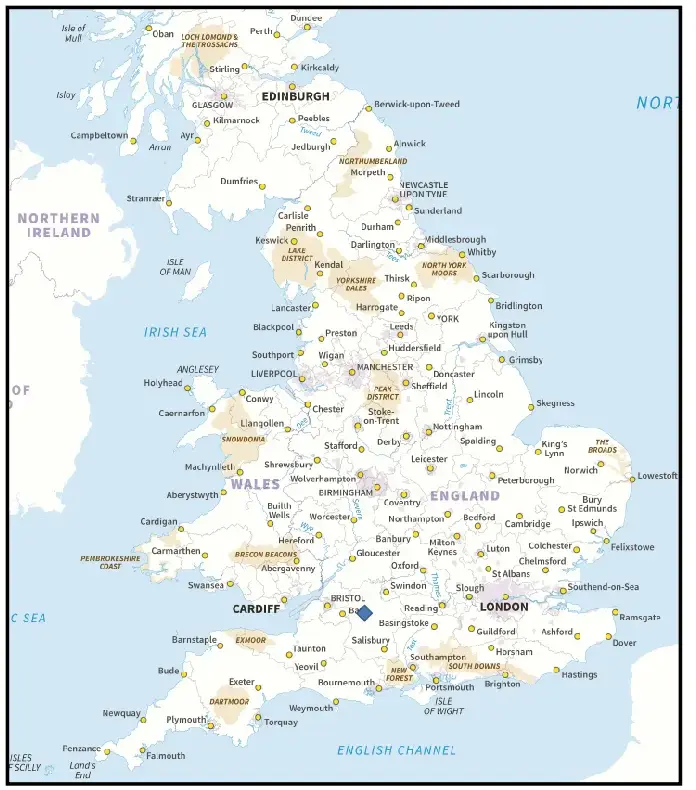Three species of truffle in this Aestivum group of black truffles have been found in Britain.
Summer Truffle (Tuber aestivum)
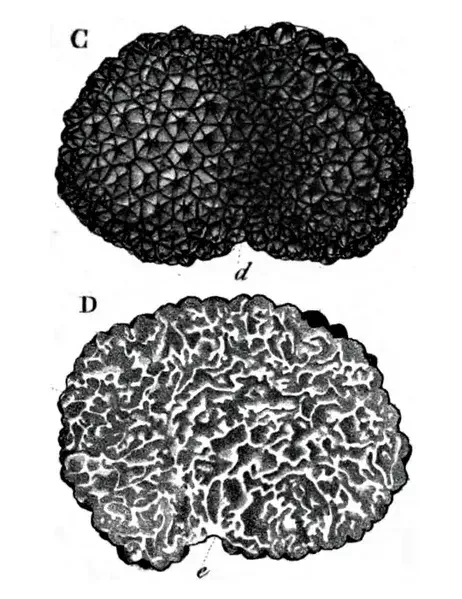
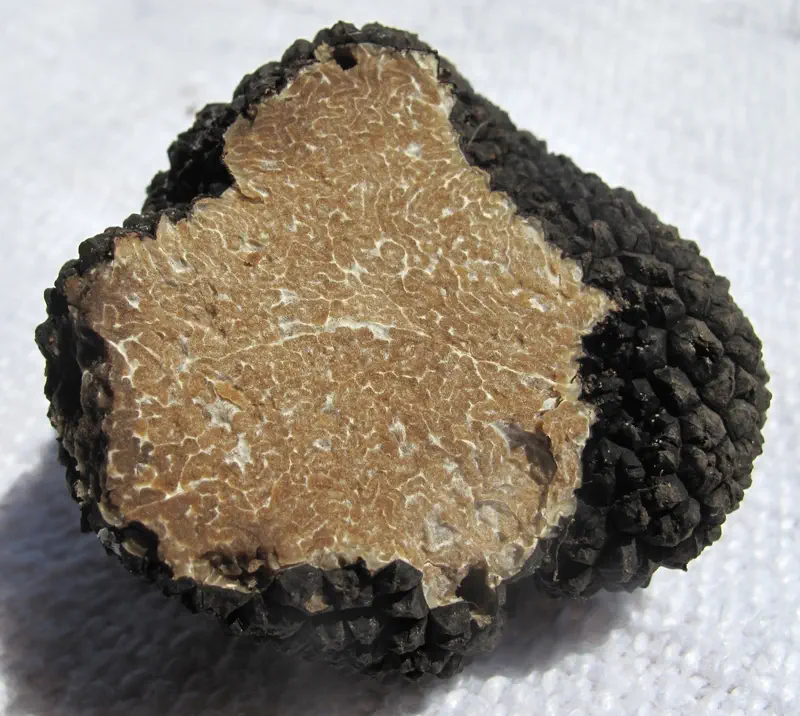
What was formerly considered to be a separate species, the autumn (or Burgundy) truffle is now considered by scientists from molecular (DNA) analysis, to be an autumnal variety of summer truffle (Tuber aestivum var. uncinatum). Externally they appear identical to a summer truffle. As well as a later season, they have a stronger aroma and flavour, the gleba is darker with more white veins and there are differences in spore morphology. Uncinatum is from the Latin uncinatus – hook, referring small hook-like filaments on the spores.
The differences are now considered a consequence of ecological rather than evolutionary factors. The commercial world however, with the differences in ecology, seasonality and price, does differentiate between summer and autumn truffles applying the names Tuber aestivum and Tuber uncinatum respectively. Consumers and trade customers can purchase both varieties from a number of companies including us.
| Common Name: | Summer truffle (Common truffle) |
|---|---|
| Scientific Name: | Tuber aestivum Vittad. |
| Etymology: | From Latin aestivus pertaining to summer. |
| Detailed information: | Trufamania |
| Peridium: | Black with pronounced pyramid-shaped warts. |
| Gleba: | White marbling on a pale cream to brown background with a network of fine, white veins. |
| Aroma: | Nutty / earthy – stronger in the Autumn version. |
| Shape: | Generally rounded. |
| Size: | Typically 3 – 5 cm across; weighing 20-50 grams. On occasions they can weigh half a kilo. |
| Ripening period: | May to September (T. aestivum) and from September to nearly all through winter (T. aestivum var. uncinatum). |
| Distribution: | One of the commonest Tuber species widespread in the British Isles and occurring through much of Europe. It occurs in association with a variety of deciduous trees, though is most frequent with beech on calcareous soil over chalk or limestone. |
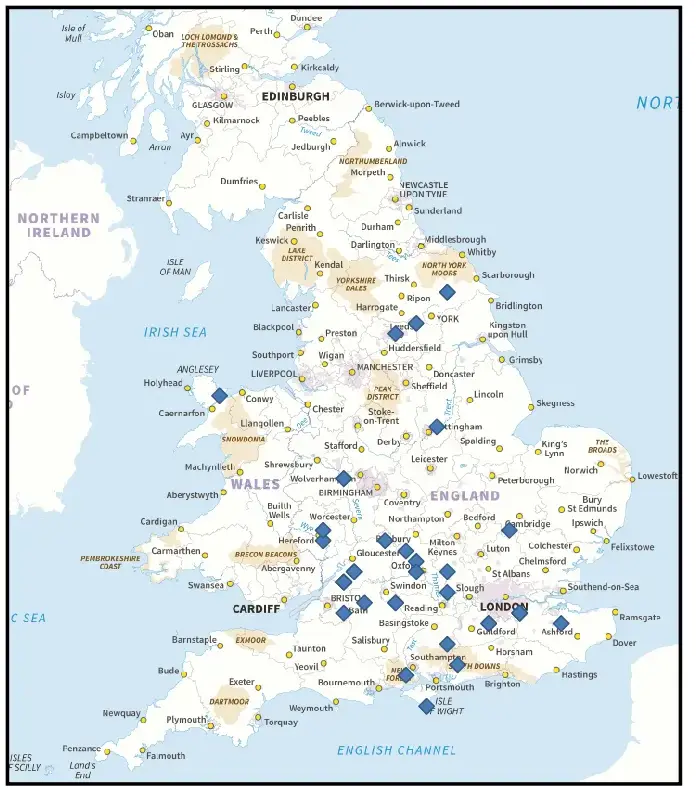
Smooth black truffle (Tuber macrosporum)
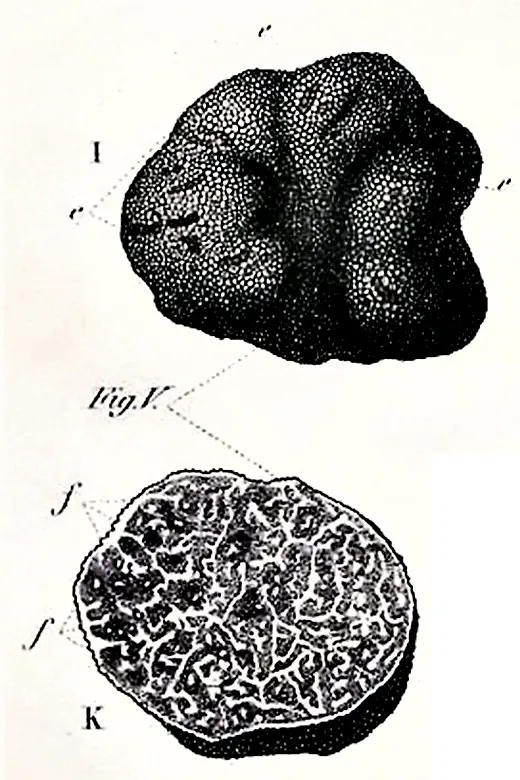
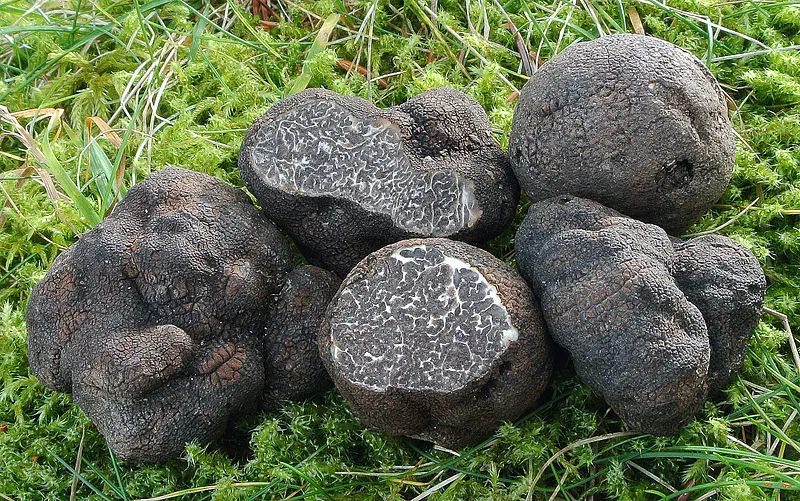
The smooth black truffle (Tuber macrosporum) is an edible species. It is also known as “garlic truffle” for its aromatic resemblance of garlic, has an aroma that is vaguely similar to the esteemed Italian White truffle Tuber magnatum pico.
| Common Name: | Smooth black truffle (Large-spored truffle / Garlic truffle). |
|---|---|
| Scientific Name: | Tuber macrosporum Vittad. |
| Etymology: | From Greek makros, large, and spora, seed or spore |
| Detailed information: | Trufamania |
| Peridium: | The colour ranges from reddish brown to rust to blackish. It has very small warts giving a smooth appearance. |
| Gleba: | Purplish-brown to grey-brown with thin white veins. |
| Aroma: | Intense garlic-like similar to the Italian white truffle (Tuber magnatum). |
| Shape: | Roughly spherical to irregular. |
| Size: | Typically 1 to 5 cm across. |
| Ripening period: | September to December. |
| Distribution: | A rare species in the British Isles with only a few finds. These are from Avon, Somerset, Sussex, and Warwickshire. A find of this species in Norfolk in 2008 made it to the media (e.g. BBC News). The previous recorded find was in 1911. They may be more common than thought. In a letter to The Times in January 1939 (see The History of English Truffles), the writer recalls when he was a boy living on the chalk downs of Hampshire, the Wiltshire truffle hunter Eli Collins (1840-1924) would come to the area. “The truffles smell distinctly of garlic when raw, but lost this when stewed”. It is found in Europe, and common in central Italy in the same areas as the Italian White and is recorded in association with oak, poplar, willow, hazel, lime and chestnut. |
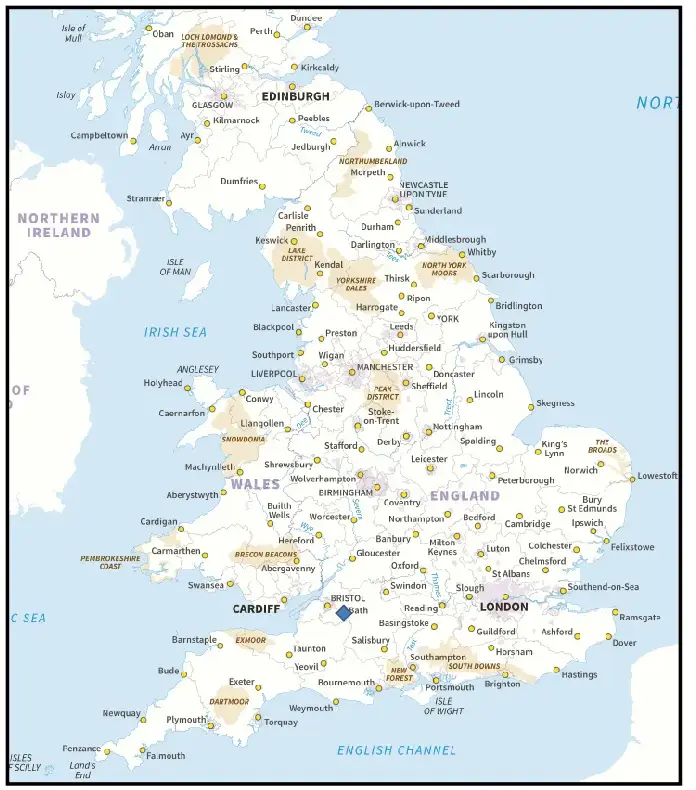
Bagnoli truffle (Tuber mesentericum)
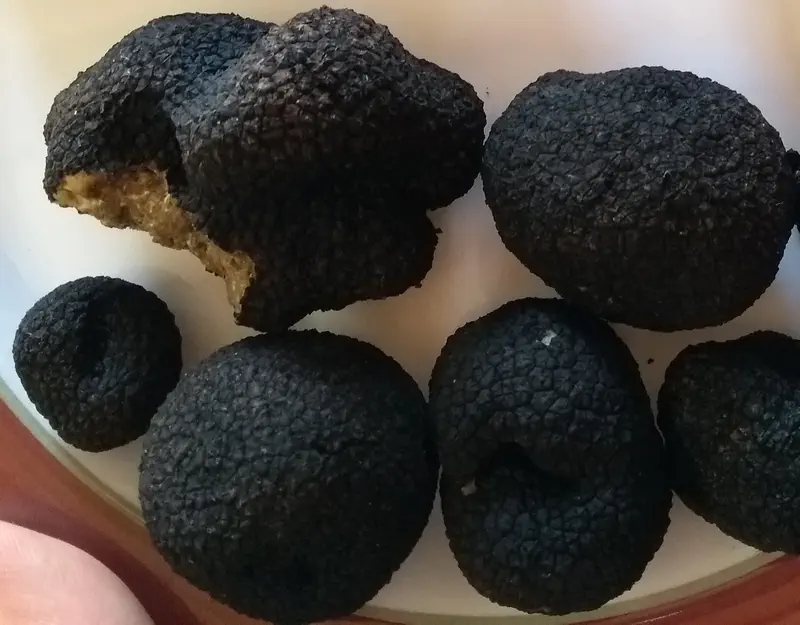
In theory this is an edible species, but the strong odour of phenol / carbolic / pitch / naphthalene / horseradish puts most people off. It is appreciated in south Italy and north east France. The odour can apparently be removed if the truffles are gently warmed or kept open to the air for a few hours.
Truffles of this species are often confused with the closely related Summer truffle (Tuber aestivum) as:
- Detail of the warts cannot be considered a distinguishing feature between the two species because they are shown to be present in both species.
- Basal cavities or depressions can sometimes be found in T. aestivum and T. mesentericum have been found without it.
- The aroma of T. mesentericum can, sometimes, lack the phenolic smell that is unique to this species.
- The Autumn variety of Summer truffle (T. aestivum var. uncinatum) and T. mesentericum can occur in the same environment and maturity periods can overlap and be collected together.
These overlaps make some authors designate them as T. aestivum – mesentericum complex. T. mesentericum is treated as a variety of T. aestivum by some. Others, including Index Fungorum list them as two separate species.
The colour of the gleba is considered the most reliable morphological feature to differentiate the two species.
| Common Name: | Bagnoli truffle (Mesentricum truffle / Lorraine truffle / Ordinary black truffle). |
|---|---|
| Scientific Name: | Tuber mesentericum Vittad. |
| Etymology: | |
| Detailed information: | Trufamania |
| Peridium: | Black with irregular, pyramid-shaped warts which are a little smaller than those of summer truffles. |
| Gleba: | Typically brown, often with lilac / violet shades and numerous white intensively winding veins at full maturity that radiate from the basal cavity. |
| Aroma: | Often described as strongly smelling of phenol. Other words for the aroma include carbolic, pitch, naphthalene or horseradish. A synonym (past name) is T. bituminatum – that tells you all you need to know! |
| Shape: | More regular and rounded that T. aestivum but with a characteristic basal cavity (depression / bowl). |
| Size: | Typically 3 – 5 cm across; weighing 20-50 grams. |
| Ripening period: | From September to nearly all through winter. |
| Distribution: | Potentially widespread in the British Isles though most frequent on calcareous soil with beech. In Europe they are additionally found with oak, hazel and pine. |
